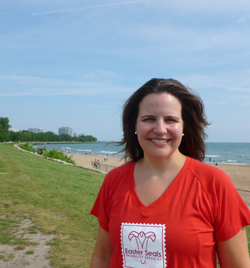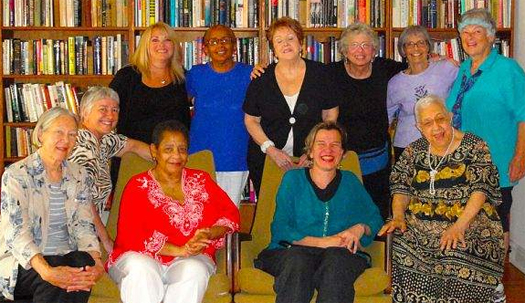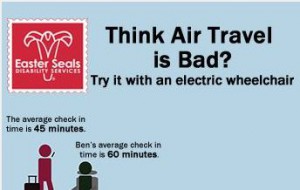by Beth Finke
The cold and snowy weather last week had a lot of people asking me if my seeing eye dog Whitney likes being out in winter weather. Truth is, she doesn’t have much choice. Poor guide dogs, they never get a day off work!
The snow started falling in Chicago last week, and it was still coming down days later. The American Federation of the Blind devotes a section on its web site to traveling in winter weather:
Winter weather is often more time consuming, more physically and mentally tiring, and possibly more fraught with danger than traveling in good weather. The cold often brings personal discomfort, making it difficult to concentrate and learn during travel or mobility lessons. Your toes, fingers and ears are particularly at risk. To protect your extremities, it is necessary to plan one’s clothing and equipment well beforehand.
When I was a kid, I thought it was magical the way snowfall muffled the sound around you. I still do. But on my walks with Whitney the past week, it just wasn’t the magic I was looking for.
Enough snow fell to mask the audible cues I use to navigate the city. Commuters who could see trudged through the Loop (downtown Chicago’s business district) with their heads down to avoid the snow pelting their faces. This would have been fine if they all had dogs like mine to guide them, but they didn’t. Whitney was on her own, weaving me around the blinded commuters in our path.
And that wasn’t all: snow accumulated between the raised, circular bumps I’ve come to rely on to tell me we’re at the edge of a curb ramp, so I wasn’t always exactly sure where we were. The further we got away from the Loop, the fewer pedestrians crossed our path. I’d stop. Listen. No footsteps in the snow, no sounds of shovels, nobody there. Panic. Where were we?
All I can do when this happens is take a deep breath and remember what trainers drummed into our heads when my blind peers and I were first learning to work with our guides: trust your dog. “Whitney, forward!” I hold on tight to her harness, follow her lead, and before long we’re at our destination, safe and sound.
As the snow begins to melt now, salt on the streets is the problem—it gets into Whitney’s paws, and stings. Thank goodness for booties. Whitney’s gotten used to wearing them now, and I’m getting used to compliments, too. Strangers on city streets gush when we pass by. “Awww! Look!” they exclaim. “That dog has shoes!” It makes me smile, and I picture those strangers smiling in the snow too. My dog is more than a guide, she’s a therapy dog, too. “Good dog, Whitney!”
 Last Friday I took the morning off and took a train with my Seeing Eye dog Whitney to Deerfield, a suburb of Chicago, to talk with second graders at Kipling Elementary School. The kids asked a lot of questions during the Q&A part of the presentation, and I thought you’d enjoy hearing some examples:
Last Friday I took the morning off and took a train with my Seeing Eye dog Whitney to Deerfield, a suburb of Chicago, to talk with second graders at Kipling Elementary School. The kids asked a lot of questions during the Q&A part of the presentation, and I thought you’d enjoy hearing some examples:








 I am so pleased to have Amy Richmond back as a guest blogger today. Amy is a member of the Easter Seals
I am so pleased to have Amy Richmond back as a guest blogger today. Amy is a member of the Easter Seals  In addition to my job moderating this blog for Easter Seals Headquarters, I also lead three different memoir-writing classes every week for senior citizens here in Chicago.
In addition to my job moderating this blog for Easter Seals Headquarters, I also lead three different memoir-writing classes every week for senior citizens here in Chicago. 
